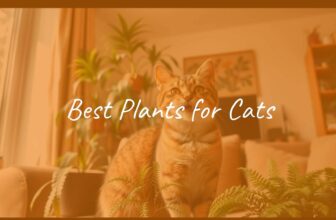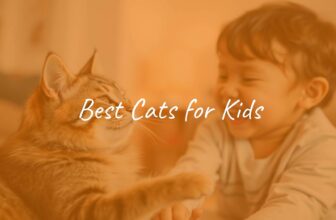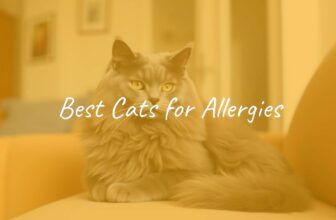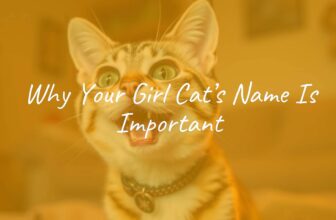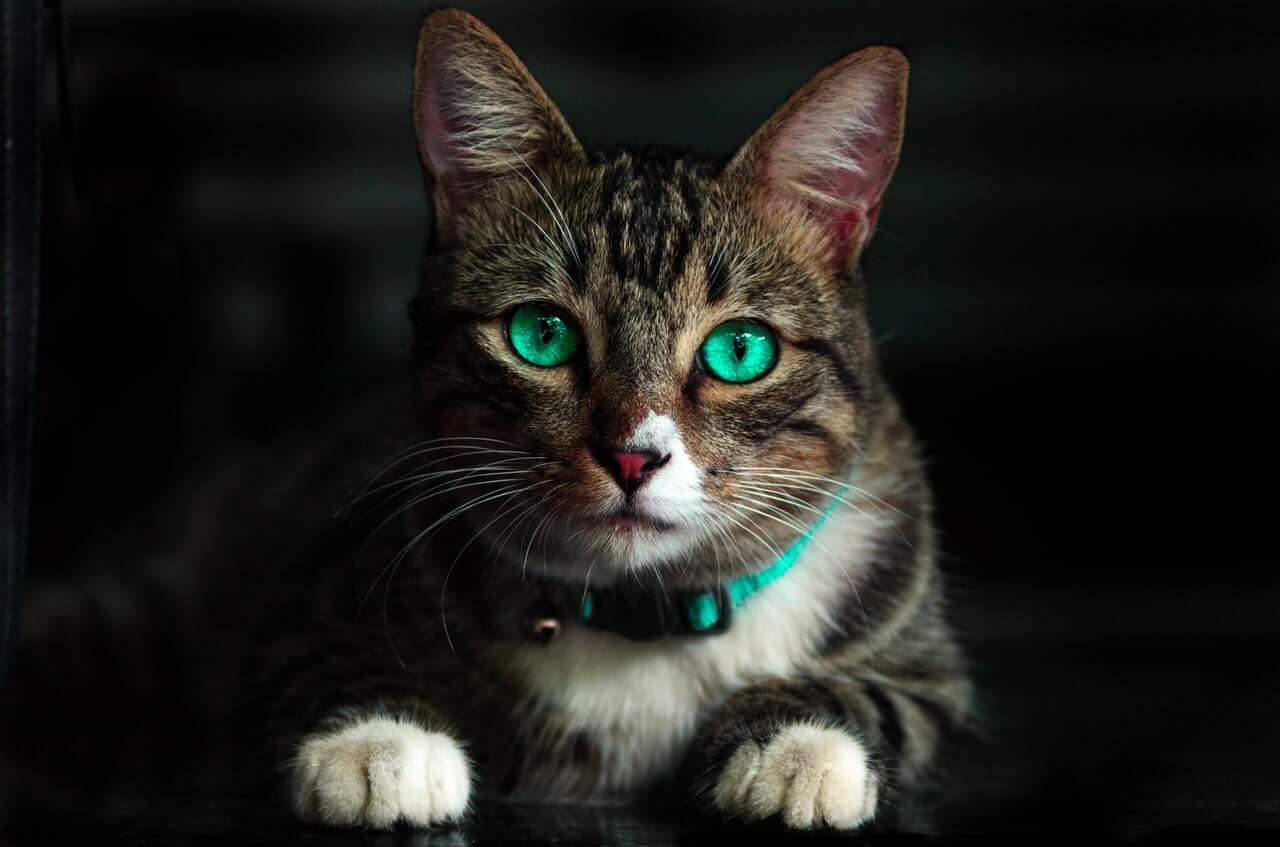
Both dry food and wet food can be used to feed your cat a healthy and balanced diet. Whether you choose one or mix both depends on your circumstances as well as your cat’s needs and preferences.
Dry food for cats – Advantages of dried fodder
Dry Food Is Practical, Environmentally Friendly And Cheap.
For you as a cat owner dry food has a lot of advantages to offer. You have to carry less weight when you go shopping, you can store it without any problems and you don’t have to go to the fridge with leftovers, for example. You burden your environment less with packaging waste and normally pay less money than with wet food because you don’t “pay for water”. The cost savings are particularly noticeable in households with several cats.
With Dry Food You Can More Easily Accommodate The Natural Eating Behaviour Of Your Cat.
Wild cats eat about 10 to 15 small prey animals (or parts of them) within 24 hours and our domestic cats keep it very similar if they can: they very often go to their feeding bowl to have a small snack instead of filling their stomachs in the morning and evening like a dog would do.
So you can put the daily ration of dry food in the bowl in the morning and your cat can help himself to it as he likes. You should never do this with wet food, as it quickly becomes unappetizing and unhygienic. More than two to three meals with wet food are therefore hardly manageable for working cat owners.
Dry Food Promotes Dental Hygiene
When cats chew dry food, their teeth are mechanically cleaned. Less food remains in the spaces between the teeth, salivation is stimulated and there is less plaque. However, this only works if the croquette size, shape and texture match the cat’s teeth. So the cat has to chew and the teeth have to reach a certain penetration depth into the kibble. Premium manufacturers are doing a lot of research to optimise their food croquettes accordingly, but many manufacturers probably adapt their croquettes (research Institute) more to the visual preferences of cat owners.
Dry food for adult cats also often contains “calcium scavengers”, which are also used in toothpastes for humans (sodium triphosphates), for example, and ensure that less calcium is available to build up tartar.
If your cat already has dental problems, you should have tartar removed by a vet and feed a dry food specially optimised for dental hygiene. Daily tooth brushing is also recommended.
Disadvantages of dry food
If dry food is stored for a longer period of time in an opened feed bag, feed mites can migrate and the nutrients can be affected, e.g. vitamins can be destroyed and fats can become rancid.
Ideally, your cat should be able to empty the food bag within a month and you should store the food in a dry, cool and dark place, e.g. in a food bin in the basement (please clean it with hot water after each complete emptying). You can also freeze part of the dry food to prevent contamination with mites and loss of nutrients.
Unopened, a bag of dry food will usually last for 12 to 18 months.
Compared to moist food, dry food is an energy concentrate, so it is easier to become overweight if the amount of food is too large.
The reason is simply that wet food contains four to five times as much water as dry food and the calories are, therefore “diluted” accordingly. However, if you consistently limit the daily dry food ration (possibly by weighing it with a scale), you can easily prevent weight gain. It is also important to choose the right food for your cat’s living conditions, so neutered cats and indoor cats should always get a low-calorie dry food.
Some Cats Drink Too Little When Given Dry Food.
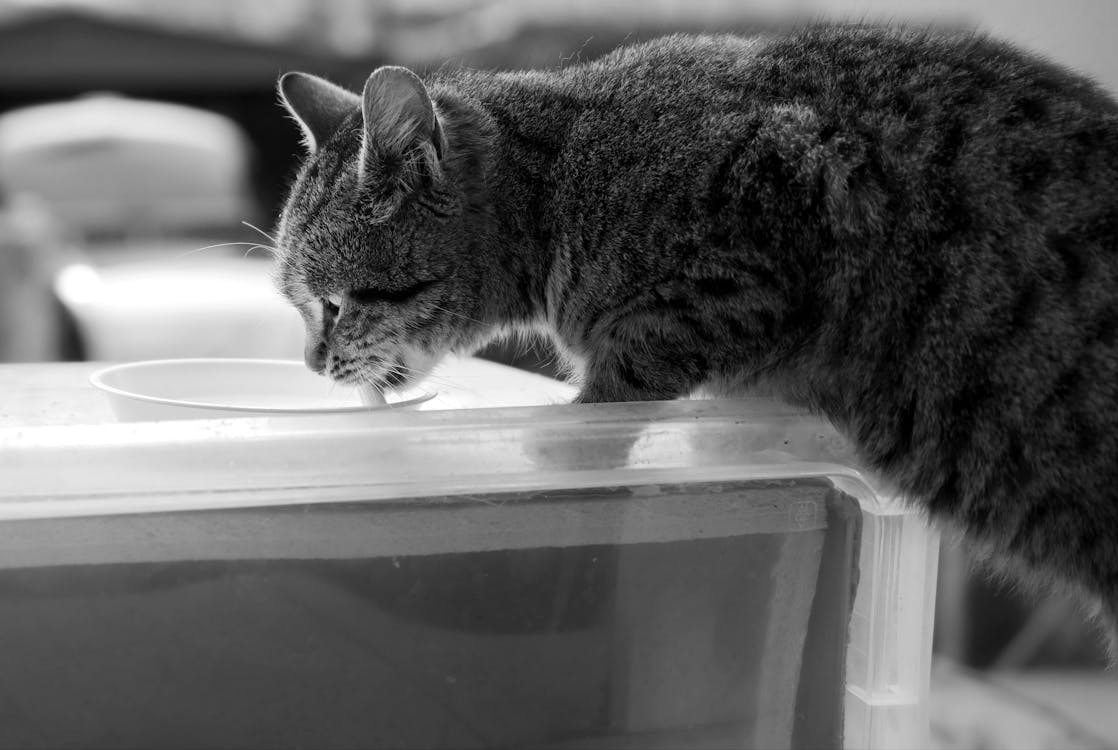
Because dry food contains only about 7 to 10% water, cats must drink an additional 200 ml of water when fed dry food, depending on the size and activity level of the cat and the environmental conditions.
However, as former desert dwellers, many cats drink little by nature and are able to save water by excreting very concentrated urine. This can promote the development of urinary stones and can also be a problem in kidney disease.
Therefore, in the case of such diseases, it is sometimes advisable to switch affected cats to wet food. However, you can also encourage your cat to drink, for example by offering him several water bowls distributed around the house (not directly next to the food bowl!) or by purchasing a cat fountain.
Wet food/moist food for cats – Advantages of wet feed
Wet Food Tastes Good To Most Cats.
Because wet food contains more water than dry food, the aromas unfold better and the smell is more intense. In addition, wet food is usually higher in protein than dry food, which cats also find delicious.
Wet Food Provides A Lot Of Liquid.
Wet food contains around 80% water, so that a less active cat can cover almost all its fluid requirements with wet food alone. For animals that drink little and are prone to urinary stones or constipation or suffer from kidney disease, wet feeding can therefore be beneficial. Sick cats will dry out less easily and they will urinate more thinly, making it easier to flush out urine crystals.
Originally Packaged Wet Food Lasts A Very Long Time.
As long as a can or bag of cat food is intact, the contents of the tin remain fresh and of high quality – even for up to two years – without the need to add preservatives.
Wet Food Can Help To Avoid Overweight.
The high water content of wet food dilutes the calories, so to speak, so you can “overdose” it less easily than dry food.
The components of wet food
The individual analytical values of canned food can be used to determine whether it is high-quality food. We give you some examples of this:
Components Important to know
Crude protein
- reflects the protein value in wet feed
- the value should be between 5 – 15
- make sure that they come from animal or plant materials
- for animal proteins, the value may be higher than 15
Grease
- the percentage of crude fat should be between 2 – 7 P%
- Animal fats are healthier than vegetable fats
- avoid vegetable fats if possible
- Raw ash
- shows the amount of inorganic substances
Minerals
- the value should be between 1,5 – 2
Crude fibre
- Raw fibres are dietary fibres are indigestible for the cats
- a high value may indicate many plant ingredients
- the value should be kept as low as possible and be less than 1,5%
Humidity
- the value should be between 50 – 70
Minerals, additives and vitamins – What should and should not be included in canned food for cats
That should be included
Taurine
Taurine plays an important role in your cat’s metabolism and additionally strengthens the eyesight of the animals. It also strengthens the heart.
Taurine is contained in meat as well as in the intestines. However, veterinarians disagree on how high the taurine value of cat food should be, so opinions range from 400 – 2500 mg per kilo of cat food.
Vitamins
Of course, vitamins are also very important and are also contained in the intestines as well as in the meat. However, these can be destroyed by excessive heat during the production of food.
Calcium and phosphorus
Calcium and phosphorus are important for the bone structure and kidneys of cats. These should be in a ratio of 1.2 to 1 (calcium 1.2 – phosphorus 1).
Potassium and Sodium
These ingredients are also very important and should be listed in all canned foods. The ideal ratio here is 2.1 potassium to 1 sodium.
This should not be included
Sugar and flavour enhancers
Flavour enhancers have the task of distracting the cat from the poor quality of the ingredients, as is often the case with some cheap products.
Sugar also leads to caries and obesity. If the food is high-quality food with a nice high meat content, additional flavour enhancers are not needed.
Colouring agents
High-quality cat food does not need colouring, because the main purpose of colouring is to make the cat food look more valuable and appetizing, which is not intended for the cat, but for the cat owner.
Gelling agents
These have the task of binding the meat juice so that a sauce or tasty jelly is created. Unfortunately, E-numbers or starchy substances are often used here, which can be harmful to the cat.
Preservatives
These have the task of ensuring that the food has a longer shelf life. Therefore, artificial preservatives should be avoided, for example potassium sorbate, also known as E303. Natural antioxidants, such as citric acid, are not quite as bad.
Disadvantages of wet food
You Have To Pay For Water And Carry It Home.
Whether you consider the high water content of wet food to be an advantage, or are annoyed because you have to spend more money per meal and carry more weight home, depends on your own point of view. At the very least, it cannot be denied that dry food puts less strain on cat owners’ wallets and arm muscles.
Wet Food Causes More Packaging Waste.
If you look at the life cycle assessment of your household, dry food performs better than wet food, especially if you buy tins or aluminium trays, the production of which is raw material intensive.
Wet Food Spoils Quickly In Fresh Air.
You should put wet food fresh in the bowl at every meal and dispose of leftovers quickly. 10 to 15 small meals, such as cats eat when they hunt prey or get dry food, cannot be realized with wet food.
Opened wet food packaging can be kept in the refrigerator for up to three days if sealed airtight (please observe the manufacturer’s instructions). However, you should never serve wet food to your cat in the refrigerator because cold food can irritate the stomach lining and cause vomiting.
Not Every Wet Food Is A Complete Food
Only cat food declared as complete food reliably covers the entire nutritional needs of your cat, as the term complete food is protected by law.
However, many moist foods are intended as a treat or as a supplement to dry food (e.g. pure meat cans) and are therefore not suitable as a sole food. Especially with wet food the risk of confusion is high and you should take a close look at the product before buying it.
Mixed feeding with dry food and wet food – Advantages of mixed feeding
Young cats learn mainly from their mother what is edible and what is not. If they get to know only one type of food in the first half of their life, there is a high risk that they will eat only this one type of food for the rest of their lives.
This can become a problem if your cat falls ill – even if it is only that he can chew his dry food badly from time to time due to dental problems.
So it’s a good idea to get kittens used to both dry and wet food. This will give you a wider choice of cat food and make it easier for you to adapt feeding to your cat’s life situation.
Disadvantages of mixed feeding
Actually, mixed feeding only has disadvantages if you overshoot the mark. The most common mistake is that the recommended feeding amounts on the dry feed bag and the wet feed packaging are simply added together. This way the cat gets significantly more calories than it needs in the bowl and, if it eats it all, inevitably becomes too fat.
On some packages, ration recommendations for mixed feeding are given. If this is not the case, you can ask the manufacturer how to dose the food or ask your vet to calculate a suitable mixture based on the calorie content.
The second very common mistake is that we humans want to offer our cats variety and, especially with mixed feeding, like to change the type of food or the taste frequently. Almost all cats are enthusiastic about the new food, but this effect, called “neophilia”, has two disadvantages Cats eat more of the newly offered food in the first few days than they should, which can lead to obesity again. And the cats get used to being presented with ever new taste experiences and quickly find familiar things unattractive. They often develop into fussy, fussy eaters who force their owners to try out new foods.
Even if you like to take the trouble to choose a new food for your cat from time to time, please remember: If your cat needs a special food due to an illness, this addiction to new food will become a problem.
More Information & Veterinary Recommendation
When buying cat food you should not buy every food or pay attention to the prices only. The quality of the food plays an important role. It should cover the needs and requirements of your velvet paw, be healthy and also free of additives that put unnecessary strain on your velvet paws.
Sugar
Unfortunately, many types of wet food are rich in sugar. However, sugar is not perceived by the cat as a sweetish taste. However, it serves to make the food look tasty and tasty. However, not for the cat, but solely for us cat owners. Sugar is also unhealthy, makes you fat and can also cause tooth decay in cats. For this reason it is advisable that the cat food does not contain sugar.
Animal by-products
Only very few cat owners have thought about what it means when the term “animal by-products” appears on the cat food can. This is not high quality meat. On the contrary. It is often low quality offal, which is difficult for the cats to digest.
For example, fur, urine and other waste that cats would not normally eat, but are blinded by the attractants in the food. The situation is different with wet food, which lists the animal by-products very precisely, because not all of them have to be bad. Liver, heart and stomach are also included in this category, but they are healthy for the cats. For example, some varieties do not list meat and animal by-products (including 4% rabbit), but 90% rabbit (consisting of 90% muscle meat, 5% heart and 5% stomach).
Vegetable by-products
In addition to animal by-products, there are also plant by-products. Also these have no place in wet food for cats, because this is mainly soya, which is very cheap, as well as grain waste. Of course, these are not to be found in a cat’s natural diet, because cats do not eat carbohydrates to cover their energy needs, but proteins.
It is also a fact that the cat’s intestines are too short to completely break down the long chain carbohydrates, which means that they cannot be digested completely.
For this reason it is important to keep the carbohydrate content in cat food, whether wet or dry, as low as possible. Vegetable material also has the effect that the vital organs of the animals are overstrained, which in the worst case can lead to the ageing of the organs faster and cats dying of kidney failure due to poor nutrition.
Conclusion
If you ask ten veterinarians about special canned food for cats, you will probably get 10 different answers. This is mainly due to the fact that many veterinarians are not exactly trained in cat food at all or take part in training courses for special manufacturer brands, which they then sell themselves.
So it is important for you as a cat owner to pay attention to the individual ingredients yourself and rather choose a can of cat food that lists all the ingredients rather than a variety where this is not the case.
Because good cat food does not need to hide individual ingredients and keep them secret. High-quality canned food not only tastes good to your cat but also provides him with all the important nutrients he needs for a healthy life.



